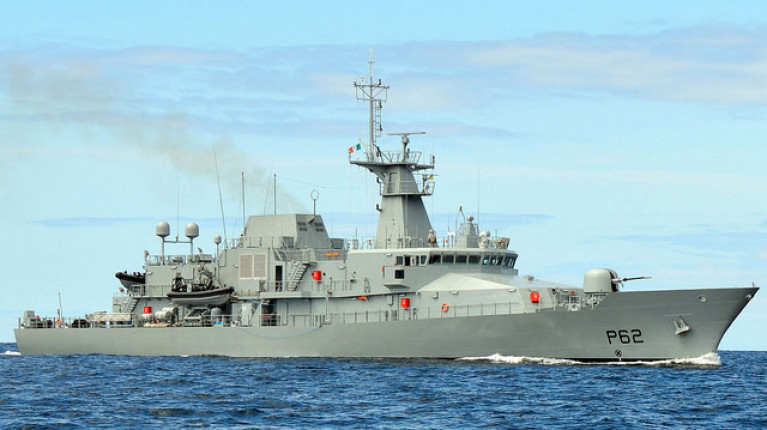Displaying items by tag: P60 class
First Navy Service 'P60' Class Vessel to Visit Limerick, Docks this Evening in Advance of Riverfest Limerick's Ship Tours
For the first time ever a Naval Service 'P60' class vessel, LÉ James Joyce visited Limerick City Docks this evening with the historic call made to enable attending Riverfest Limerick held over the May Bank Holiday weekend, writes Jehan Ashmore.
LÉ James Joyce headed up the Shannon Estuary and as of this evening, Afloat tracked the OPV enter (1800hrs approx) into Limerick Docks, one of six terminals on the estuary operated by Shannon Foynes Port Company. SFPC is Ireland’s largest bulk port and Ireland's deepwater transatlantic gateway.
The maiden call LÉ James Joyce to the mid-west city, would of been seen from the vantage points of Steamboat Quay, Barringtons Pier and Shannon Bridge.
As part of RiverFest Limerick, free tours of LÉ James Joyce (P62) will take place in Ted Russell Dock on (Saturday and Sunday) between 09.30am-17.30hrs and in groups of 10.
Access will be made to the upper decks and bridge of LÉ James Joyce from where views of Ted Russell Dock will be made possible and nearby the adjacent banks of the Shannon which will be the epi-centre of the first major national festival of the year.
For information on the Riverfest highlights (incl. water-based activities) during the 4-day events programme ending, Monday 2nd May, click the festival website here.
The LÉ James Joyce (OPV) is the second of a quartet of P60 / Beckett class vessels which were all built by Babcock Marine's former Appledore shipyard. Now the north Devon yard is one of five shipyards that form H&W Group Holdings plc.
Since the LÉ James Joyce was commissioned in 2015, the OPV has been part of naval operations involving maritime security and defence patrols of the Irish coast. The maiden call to Limerick will see naval personnel during the tours be on had to discuss a broad spectrum of careers in the service.
The inugural arrival of LÉ James Joyce to Limerick Docks, was seen from those on the vantage points of Steamboat Quay, Barringtons Pier and Shannon Bridge.
Also currently in port is the short-sea coaster Arklow Castle which is berthed alongside the river berth close to the loch entrance to the Ted Russell Dock. The city's dock is SFPC's second largest general cargo port on the estuary which is based in the heart of the city.
The dock basin has 4.5 hectares of water area and almost 1km of quays from where vessels up to 152m long with a beam of 19.8m can be docked.
As Afloat previously reported the Limerick ketch Ilen's 700 mile voyage to London (which has since been completed this afternoon) following a final leg upriver of the Thames from Tilbury. See related, Tilbury cruise terminal's new client operator's maiden mini-cruise story.
The sailing vessel berthed at St. Katherine's Pier close to the St. Katherine's Dock and the landmark of Tower Bridge. It is on the other side of the bridge that LÉ James Joyce has previously visited the Pool of London whilst moored alongside HMS Belfast.
The historic ship, HMS Belfast, a WW2 Town class light battle cruiser built by H&W, Belfast is open to the public as a floating museum.




























































